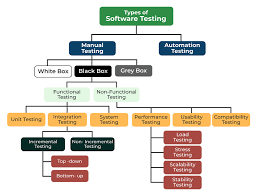Mastering Software Development Testing: Ensuring Quality and Performance
The Importance of Software Development Testing
Software development testing is a crucial phase in the software development lifecycle. It involves the process of evaluating a software application to ensure that it meets specified requirements and functions correctly. Testing is essential for identifying defects, errors, or bugs in the software before it is released to end-users.
Benefits of Software Development Testing
Identifying Bugs Early: Testing helps in identifying and fixing bugs early in the development process, which reduces the cost and effort required for fixing them later.
Ensuring Quality: Testing ensures that the software meets quality standards and performs as expected, leading to higher customer satisfaction.
Enhancing Security: Security testing helps in identifying vulnerabilities and weaknesses in the software that can be exploited by malicious users.
Improving Performance: Performance testing helps in evaluating the speed, responsiveness, and stability of the software under different conditions.
Types of Software Development Testing
Unit Testing: Tests individual components or units of code to ensure they work correctly.
Integration Testing: Tests how well different modules work together as a group.
System Testing: Tests the entire system as a whole to ensure all components work together seamlessly.
Acceptance Testing: Tests if the software meets user requirements and is ready for release.
The Role of Testers
In software development testing, testers play a critical role in designing test cases, executing tests, reporting defects, and ensuring that the software meets quality standards. Testers collaborate closely with developers to identify and resolve issues effectively.
In Conclusion
Software development testing is an integral part of creating high-quality, reliable software applications. By investing time and resources in testing, organizations can deliver products that meet user expectations, perform well, and are secure against potential threats.
Essential Tips for Effective Software Development Testing
- Write clear and concise test cases that cover all possible scenarios.
- Automate repetitive tests to save time and ensure consistency.
- Perform both manual and automated testing to catch different types of issues.
- Regularly review and update your testing strategy to adapt to changes in the software.
- Collaborate with developers to understand the codebase better and improve test coverage.
Write clear and concise test cases that cover all possible scenarios.
When conducting software development testing, it is essential to write clear and concise test cases that cover all possible scenarios. By creating comprehensive test cases that address various scenarios, developers and testers can ensure thorough testing of the software application. Clear and concise test cases help in identifying potential issues early in the development process, leading to efficient bug fixing and a higher quality end product. Covering all possible scenarios in test cases also helps in validating the software’s functionality under different conditions, ensuring its reliability and performance.
Automate repetitive tests to save time and ensure consistency.
Automating repetitive tests in software development is a valuable tip that can significantly improve efficiency and maintain consistency in the testing process. By automating routine tests, developers can save time and resources that would otherwise be spent on manual testing. Automation helps ensure that tests are performed consistently, reducing the likelihood of human error and providing more reliable results. This approach not only speeds up the testing phase but also enhances the overall quality of the software by identifying issues quickly and accurately.
Perform both manual and automated testing to catch different types of issues.
Performing both manual and automated testing in software development is crucial to ensure comprehensive test coverage and catch different types of issues. Manual testing allows testers to apply human intelligence, creativity, and intuition to explore various scenarios that automated tests may overlook. On the other hand, automated testing helps in executing repetitive tests efficiently, ensuring consistency and accuracy. By combining both approaches, teams can identify a wider range of defects, improve test efficiency, and enhance the overall quality of the software product.
Regularly review and update your testing strategy to adapt to changes in the software.
Regularly reviewing and updating your testing strategy is a crucial tip in software development testing. As software evolves and changes over time, it is essential to adapt your testing approach to ensure comprehensive coverage and effectiveness. By staying proactive in evaluating and adjusting your testing strategy, you can better address new features, functionalities, and potential risks that may arise in the software development process. This proactive approach helps maintain the quality and reliability of the software while ensuring that it meets evolving requirements and user expectations.
Collaborate with developers to understand the codebase better and improve test coverage.
Collaborating with developers to understand the codebase better and improve test coverage is a valuable tip in software development testing. By working closely with developers, testers can gain insights into the intricacies of the code, identify potential areas of weakness, and create more effective test cases. This collaboration not only enhances communication and teamwork but also leads to a more comprehensive testing approach that ensures better quality and reliability of the software product. Ultimately, this joint effort between testers and developers results in a more robust testing strategy that benefits the entire software development process.



